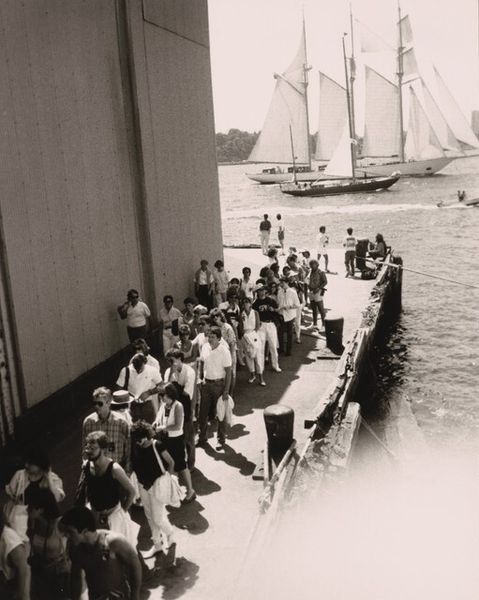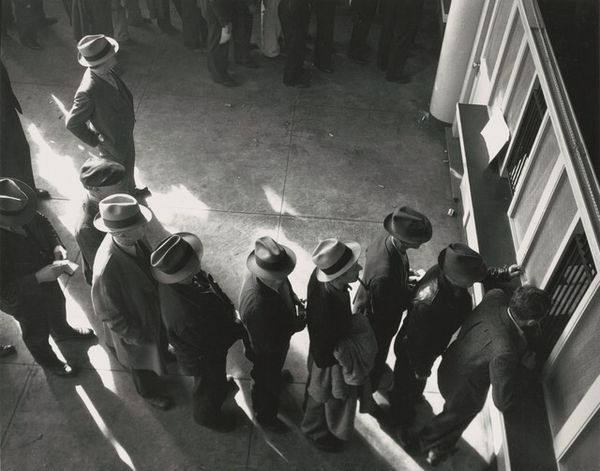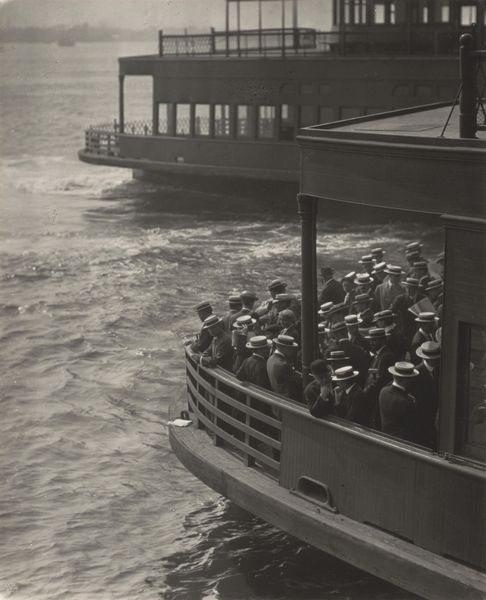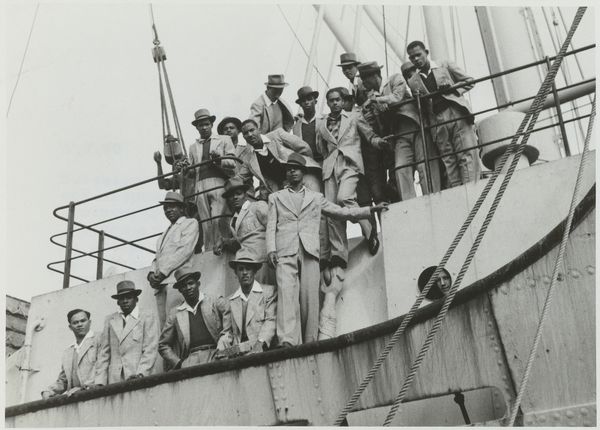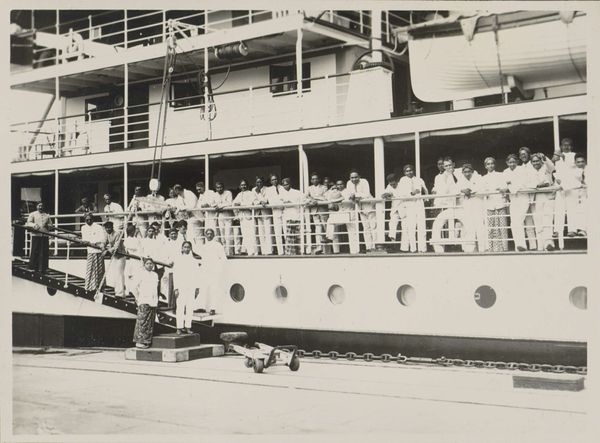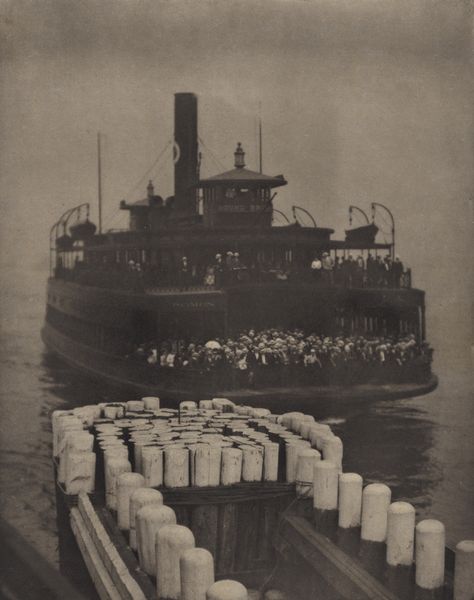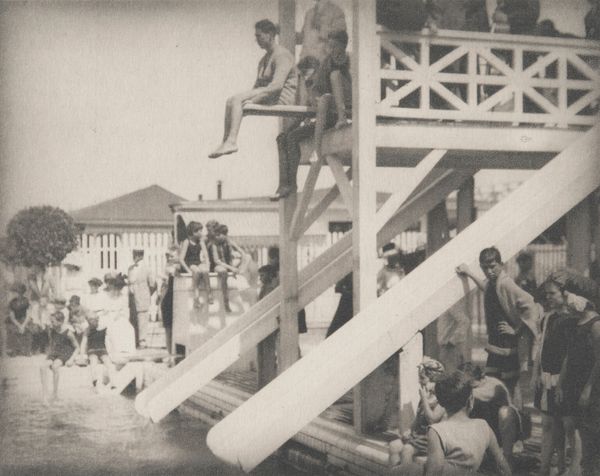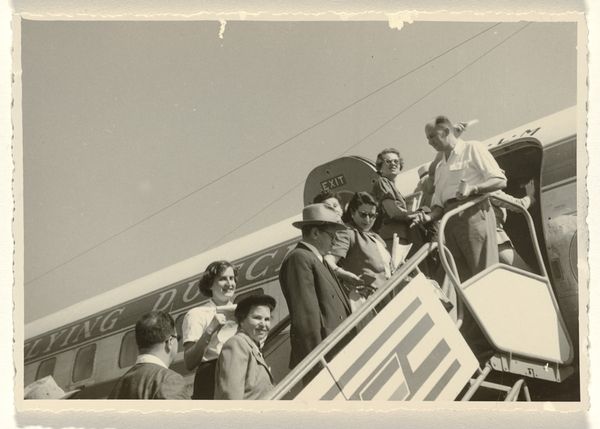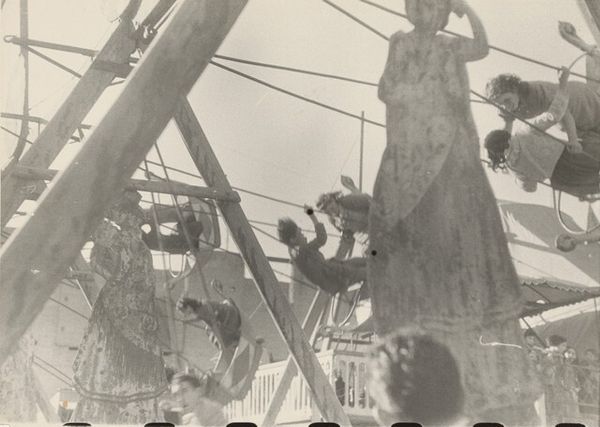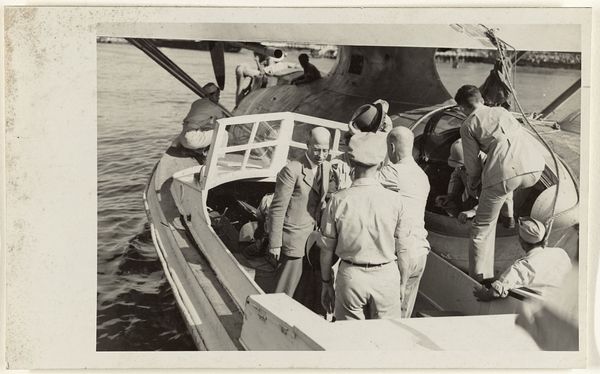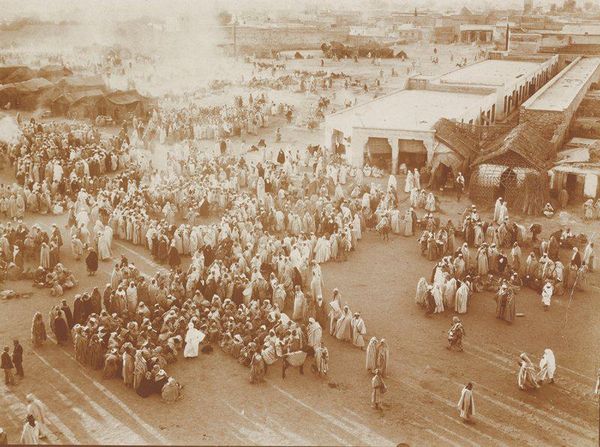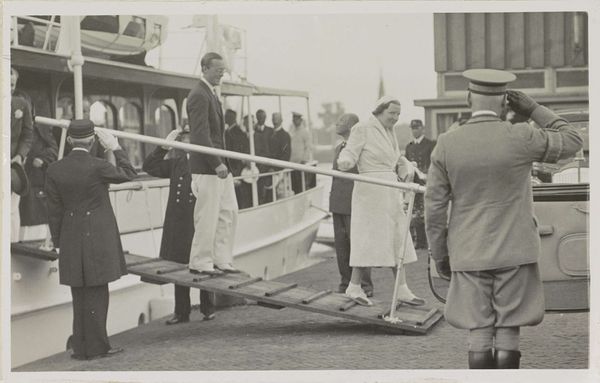
Dimensions: 11 × 9.2 cm (image/paper/first mount); 31.7 × 24.7 cm (second mount)
Copyright: Public Domain
Editor: Here we have Alfred Stieglitz's "The Steerage," a gelatin-silver print from 1907. It's striking how the composition divides the image, the well-to-do on the upper deck and the huddled masses below. It feels like a powerful commentary, but what exactly do you see in this piece? Curator: I see a photograph that, perhaps unwittingly, captures the anxieties and aspirations of its time. Consider the context: Early 20th century, mass migration, and rising class consciousness. Stieglitz, from his privileged position, inadvertently documented a stratified society in transit. Does this division feel intentional or accidental? Editor: Well, it feels almost too perfect to be accidental, the geometric shapes adding to the tension. Did Stieglitz see himself as making a political statement? Curator: That's the crucial point. Stieglitz insisted it was purely about form, about the aesthetic pleasure he found in the arrangement of shapes and figures. But can we truly separate art from its social and historical backdrop? The photograph became iconic precisely because it resonates with larger societal issues of immigration and inequality. How complicit is the artist? Editor: So, it's less about Stieglitz's intention and more about how the photograph functions within a specific cultural moment, highlighting those power dynamics? Curator: Exactly! It makes me think about how museums then, and even now, participate in shaping how we understand art. Which narratives get highlighted and which get obscured? This photo shows the experience and it gives us some material evidence of what things where like for some. Editor: This really reframes how I see the photograph. It's less about Stieglitz's individual vision and more about the complex relationship between art, society, and the institutions that frame our understanding. Curator: Precisely. It reveals the power of imagery in shaping our understanding of history. A photograph originally perceived for its formal qualities now serving as a profound commentary on societal divisions. It can certainly open our mind, and even give us some direction.
Comments
Join the conversation
Join millions of artists and users on Artera today and experience the ultimate creative platform.
